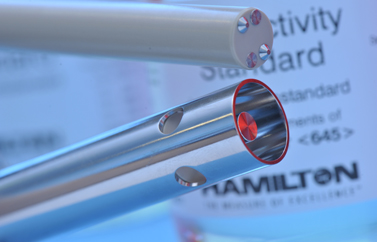- Home
- Tuotteet
- Vesimittaukset
- Conductivity
Conductivity
The electrical conductivity is important for the characterization of liquids in different kinds of processes. In aqueous solutions the conductivity is caused by the decomposition of dissolved acids, bases or salts into positive cations and negative anions. In ultra-pure water, where no ions, except very few H3O+ and OH-, are present, the conductivity is extremely low. This intrinsic conductivity of water represents the lower border of the conductivity scale.
The electrical conductivity is determined by a resistivity measurement when an alternating voltage is applied to a measurement cell that consists of two or four electrodes. To compensate for the geometry of the conductivity cell a cell constant is used. This constant is either known or determined by means of conductivity standards.
Electrical conductivity is the reciprocal of electrical resistivity, and measures a material’s ability to conduct an electric current. Its SI unit is Siemens per meter (S/m). For the measurement of the conductivity of a solution it’s common to use μS/cm or mS/cm.
2-Pole Sensor Features:
- Low cost solution
- Accurate measurement of solutions with extremely low or high ionic strength
4-Pole Sensor Features:
- Measurement linearity over a large range
- No polarization effects
- Less sensitive to coating from contaminated samples

